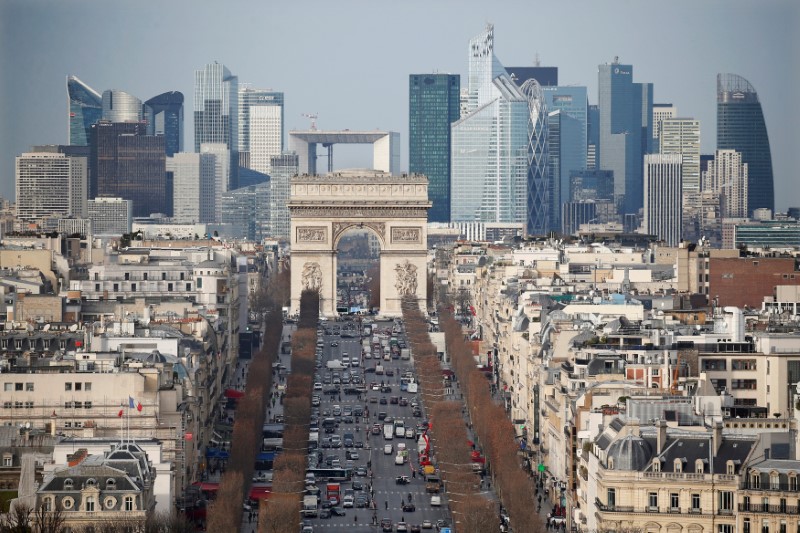
FILE PHOTO: General view of the skyline of La Defense business district behind Paris landmark the Arc de Triomphe and the Champs Elysees Avenue, France, January 13, 2016. REUTERS/Charles Platiau/File Photo
June 19, 2018
PARIS (Reuters) – French economic growth should slow this year in the face of a stronger euro, higher oil prices and uncertainty about protectionism, the INSEE stats agency forecast on Tuesday.
In sync with a broader euro zone slowdown, French growth is expected to slow to 1.7 percent after hitting a decade high of 2.3 percent last year, INSEE said in its quarterly economic outlook.
“We expect French growth to still have momentum even though less than in 2017,” the head of INSEE’s forecasting unit, Julien Pouget, told journalists.
Like other euro zone countries, France saw growth slow sharply in the first quarter after a particularly strong end to 2017 as oil prices rose 23 percent and the euro gained against the dollar, making the bloc’s exports more expensive.
Unlike other euro zone countries, increases in several taxes weighed on consumer spending in France at the start of the year while Airbus deliveries dropped back after an end of year surge.
After quarterly growth of only 0.2 percent in the first three months, the rate was seen rising to only 0.3 percent in the second quarter as rail and air strikes clipped 0.1 percentage points off growth.
INSEE forecast the rate would then pick up to 0.4 percent for the third and fourth quarters.
Over the course of the year, business investment was seen as the main driver of growth despite the growing specter of protectionism adding to uncertainty.
Nonetheless, the pace of job creation was seen slowing to 183,000 this year from 340,000, driving unemployment down 0.2 percentage points to 8.8 percent by the end of the year.
With the labor market improving, consumer spending was seen growing 1.0 percent this year, only marginally slower than last year, while higher inflation was expected to eat into households’ purchasing power.
Boosted by higher energy prices, inflation was seen peaking at 2.3 percent this year before easing to 1.7 percent by the end of the year.
(This version of the story has been refiled to fix garble in headline)
(Reporting by Yann Le Guernigou; Writing by Leigh Thomas; Editing by Matthew Mpoke Bigg)

